| Botanical Name |
|
| Family |
Asteraceae - The daisy family. |
| Pronunciation |
sen-NEESH-shee-oh ah-tik-yoo-LAY-tiss |
| Common Name(s) |
English: Candle plant; Sausage plan
|
| Plant Group |
- Ground Cover A plant with a low-growing, spreading habit, grown specifically to cover the ground.
- Succulent A plant having fleshy stems or leaves often adapted to dry conditions.
|
| Plant Size |
- Small
| Tree | 4m to 8m |
| Shrub | 50cm to 75cm |
| Perennial/ground cover | 10cm to 20cm |
| Bulb | 20cm to 30cm |
| Succulent | 10cm to 20cm |
|
| Position |
- Canopy Shade Canopy shade is found below closely grown trees where some light filters through. Ideal for the protection of herbaceous plants.
- Dry Shade Shady areas where soil has poor water retention or are dependent on rain for their moisture needs.
- Light or Dappled Shade Found below trees with sparse, open foliage. Ideal for the protection of herbaceous plants.
- Partial Shade The area is in shade for part of the day and in full sun for part of the day.
|
| General Information |
- Drought Tolerance: High The plant is well adapted to arid conditions; it can survive long periods of drought and high temperatures without extra water.
- Evergreen Plants that have leaves all year round.
- Frost: Half-hardy The plant is able to survive low temperatures and some frost but requires protection against severe frost.
- Water Wise Plant species originating from low rainfall regions that require less water to survive and thrive than other plant species.
|
| Specific Information |
Unusual form with sausage-like stem sections. The stems are distinctly blue-green. Senecio articulatus has attractive foliage which may be yellow-green in the sun to blue-green in the shade. Plants lose their leaves during drought and often during the dry part of winter, but these are quickly replenished when water becomes available.
|
| Ad Break |
|
| Flowers |
| Description |
somewhat insignificant small blooms with paintbrush-like heads
|
| Season |
- Summer Plants will seldom bloom for the entire season as given in the list, but should flower during a period within these parameters.
|
| Colour |
|
| Growth Rate |
- Fast Specifying growth rate can be very misleading as there is considerable variation of growth rate depending on type and species of plant, available water, supplementary feeding, mulching and general care, as well as the plants suitability and adaptability to the garden environment.
|
| Plant Uses |
- Container Trees, shrubs and ornamental species that can adapt to growing in a restricted environment.
- Filler Either a fast growing tree or shrub used temporarily to fill in an area while the permanent plants grow to a desired size, or a plant used to fill gaps in borders or beds.
- Ground Cover Low-lying plants that spread fast, require minimal maintenance, and cover large expanses or bare areas between bulbs or shrubs. They provide protection from erosion and drought and improve the visual appearance of the garden.
- Pot Plant A plant that needs a protected environment on a patio or indoors.
- Rock Garden An area constructed of larger rocks, arranged naturally, to emphasise the use of stones as a main element. Generally plants used do not need a lot of care.
- Suitable for smaller gardens Such plants do not have invasive root systems, remain small or controllable and can often be grown in containers.
- Wild Garden An indigenous garden planted for the benefit of wildlife and birds. Provides food, water, a variety of mini-biomes and no poisonous chemicals are used.
|
| Distribution and Habitat |
under bushes in the Karoo and in valley bush in the Eastern Cape
|
| Planting Suggestions |
Plant Senecio articulatus in well-drained, sandy soil with a little compost added. Mulch lightly, water when dry until established, thereafter water sparingly. I grow some of mine in the shade as I like the resultant increase in foliage.
|
| Medicinal Uses |
|
| Ad Break |
|


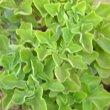
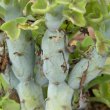
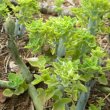
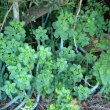
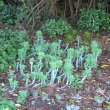
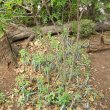
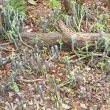


Comments
Senecio articulatus
I've bought a few of these delightful plants, what i would like to know is-- why do the leaves change colour from the green and purple to just plain green, has this got to do with not enough sun or too little, or are there different plants. Thanks Astrid
Senecio articulatus
Hi Astrid
The purple and green version, as well as the white and green, are hybrids and not found anywhere in nature. Too much shade may well have resulted in this colour change so try them in a sunnier position.
Although I have no proof of this, I suspect that the soil in which the hybrids are grown has much to do with the colour - an acidic soil may result in the pink/mauve colours being more evident.
I had a pinky-mauve specimen but I found it to be rather delicate compared to the natural plant. It was quite unable to survive the harsh conditions in my garden and soon died. I tried again, keeping it in a pot and under protection, but it did not thrive and was constantly beset by greenfly. After it died I did not bother to try again.
Kind regards
Lorraine
Discuss this plant
Share knowledge, ask a question or give an experience.